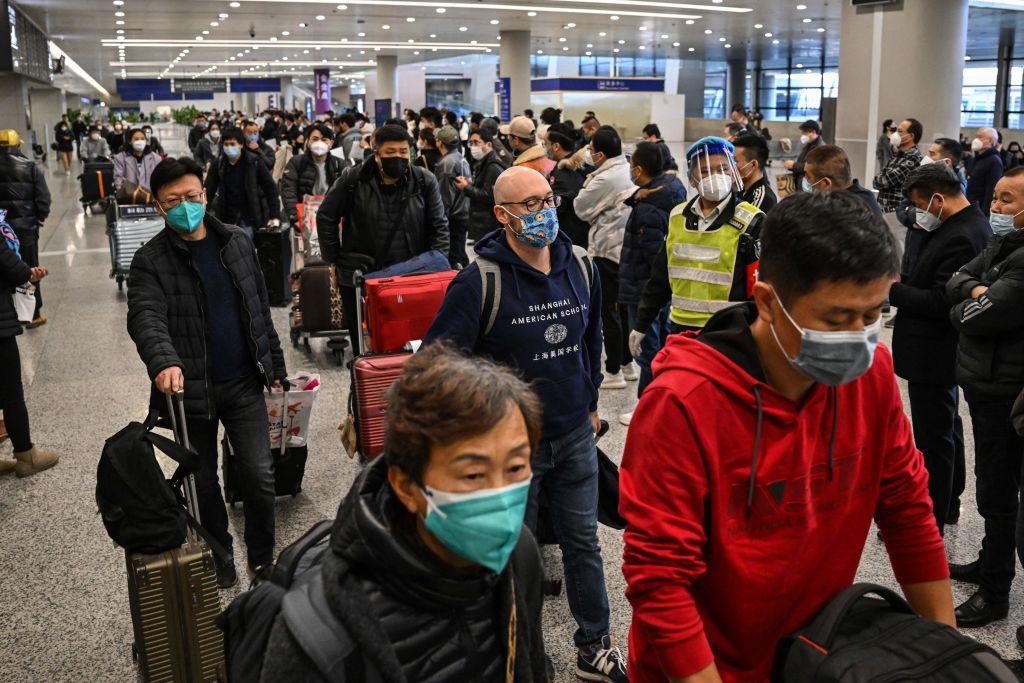
The return of air travelers from China and other Asian countries is expected to propel traffic back to 2019 levels.
Aircraft lessor Avolon said it expects global traffic to reach pre-pandemic levels by June, helped by strong growth in Asia following the reopening of China, but it warned the industry was facing an aircraft shortage and predicted manufacturers would delay delivery targets.
Dublin-based Avolon made the predictions in a paper entitled “Climb to Cruise,” published as industry events the Airfinance Journal conference and the Airline Economics Growth Frontiers Global conference were set to take place in the city.
“After a 70% recovery in passenger traffic last year led by recovery in Europe and North America, Asia will drive growth in 2023, helped by the recent reopening in China. For every two seats of airline capacity added in the world today, one is in Asia,” Avolon said.
The lessor also noted that last year’s traffic recovery brought the sector back to the brink of profitability in 2022, after combined sector losses of $180 billion in 2020 and 2021. Avolon said a profit of around $4.7 billion is forecast for 2023.
By contrast, European network manager Eurocontrol recently forecast a recovery to 95% of 2019 levels in its region in August 2023, but does not see a full global recovery to pre-pandemic levels until 2025, under its baseline—most likely—scenario.
IATA expects a return to profitability for the global airline industry in 2023, with a small net profit of $4.7 billion expected, the first since 2019 when industry net profits reached $26.4 billion. The passenger business is expected to generate revenues of $522 billion, according to IATA. Meanwhile, passenger demand is expected to reach 85.5% of 2019 levels over the course of 2023—surpassing the four-billion mark for the first time since 2019, with 4.2 billion travelers expected.
Avolon CEO Andy Cronin said: “Airlines are enjoying higher fares and load factors, and manufacturers are under pressure to ramp up production quicker. Whilst geopolitical and macroeconomic risks remain, this is a positive environment for lessors as supply constraints drive higher lease rates and increase the value of order books.”
Avolon made seven forecasts in the paper. On the traffic side, it said it expected China to drive global passenger traffic to 2019 levels by June, while it expected airline industry consolidation to accelerate as new airline startups to slow after a flurry of activity in recent years. “Consolidation will replace fragmentation in 2023 and startups without competitive niches will be forced to exit,” the lessor predicted
Avolon also suggested manufacturers would delay delivery rate targets by a year: “Airbus and Boeing are targeting producing a combined 140 single-aisle and 24 twin-aisle aircraft per month by 2025. These targets will be delayed a year to focus on delivering to schedule and quality versus aspiration.”
“An aircraft shortage is emerging. 1,700 single-aisles and 700 twin-aisles that were in production pipelines before the pandemic and the MAX grounding are a deadweight loss that cannot be recovered,” the report continued. “As traffic flows continue to rebound, the absence of new aircraft is increasing supply tension, cascading down from new-technology types to the current generation.”
Avolon said a wave of aircraft retirements was to be expected after two years of artificially low retirement rates.
The lessor said it expected two electric aircraft manufacturers to be acquired, with larger companies taking the opportunity to buy startups with promising concepts.
It also predicted Airbus A330ceo market lease rates would increase by 35%, as “used widebodies will be back in demand as international markets fully reopen, new aircraft are in short supply, and a pressing need for additional capacity emerges.”
Within the lessor sphere, Avolon said it expected two investment-grade lessors to receive rating upgrades.
On sustainability, the lessor said it expected the volume of sustainable aviation fuel (SAF) under offtake agreements to double, with ICAO tracking 40 billion liters (10.6 billion gal.) of SAF under agreements today. “This will increase to 80 billion, but more is needed,” the lessor said, adding: “Sustainability is a new competitive front for airlines.”
